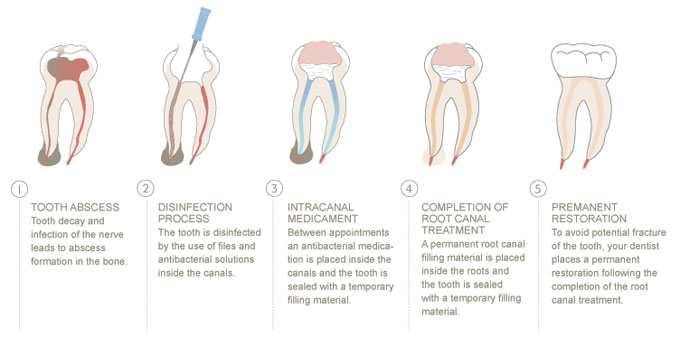The Procedure
A root canal typically requires one or more office visits. Prior to treatment a radiograph is taken to see the shape of the roots and to determine if there are any signs of infection in the surrounding bone. Local anesthesia is used to numb the area. Next, a dental dam is placed around the tooth to keep the area dry and free of saliva during treatment. An access hole is drilled into the tooth, followed by the removal of infected nerve tissue and related debris. The cleaning out process is accomplished using root canal files. A series of these files of increasing diameter are each subsequently placed into the access hole and worked down the full length of the tooth to scrape and scrub the sides of the root canals. Sodium hypochlorite and other disinfectant solutions are used periodically to flush away the debris and to eliminate any bacteria that remain inside the canals. Once the tooth is thoroughly cleaned, a medication is placed inside the tooth and a temporary filling is placed in the access hole to keep out contaminants (like saliva and food) between appointments.
At the next appointment, to fill the interior of the tooth, a sealer paste and a polymer of polyester compound called resilon is placed into the tooth’s root canal. To fill the exterior access hole created at the beginning of treatment, a temporary filling is placed and an appointment is made with your dentist for the permanent restoration. Most often a crown, crown and post, or other restoration needs to be placed on the tooth to protect it, prevent it from breaking, and restore it to full function. Your dentist will discuss the need for any additional dental work with you.
